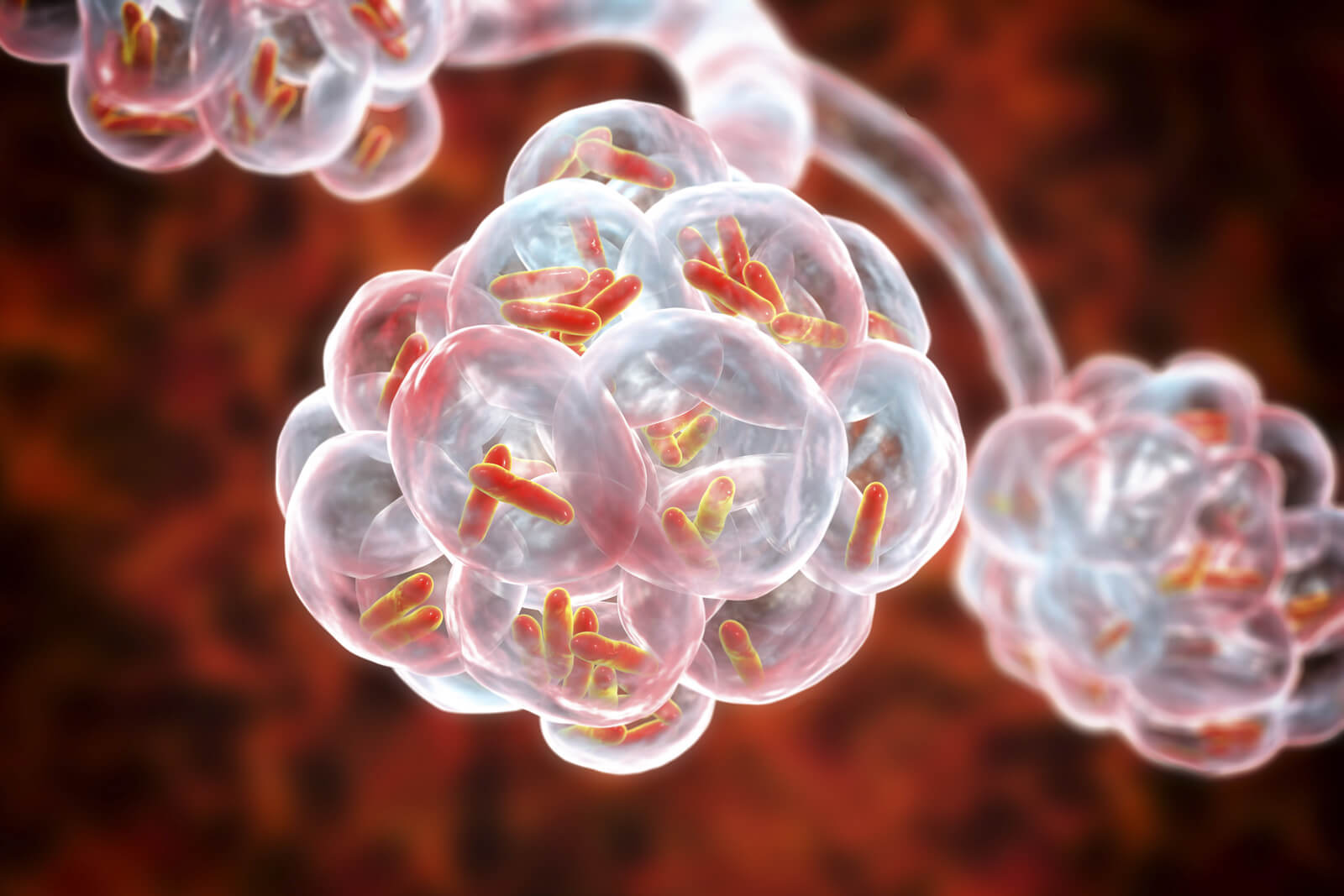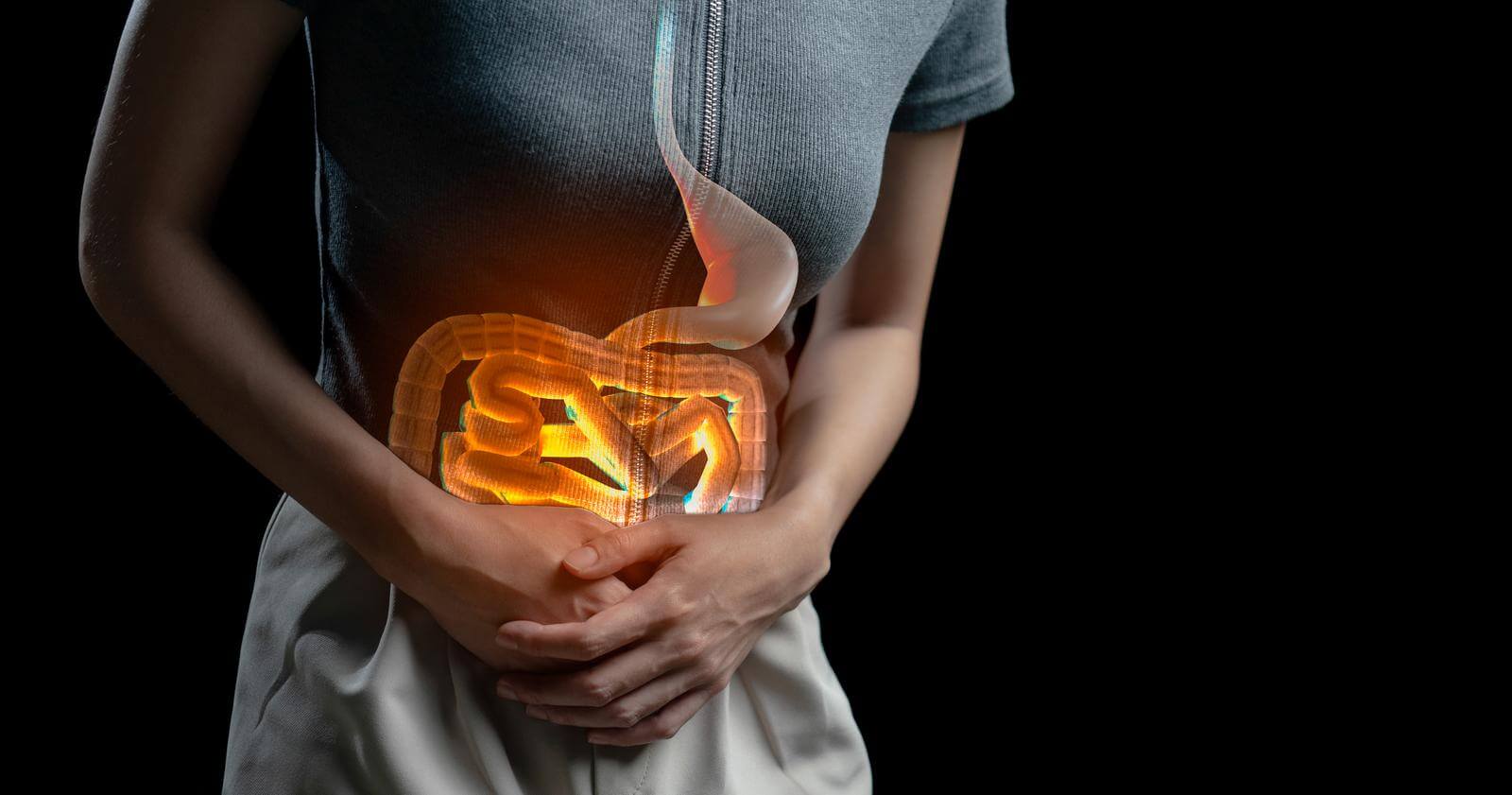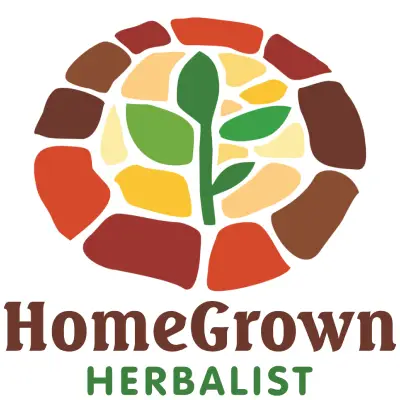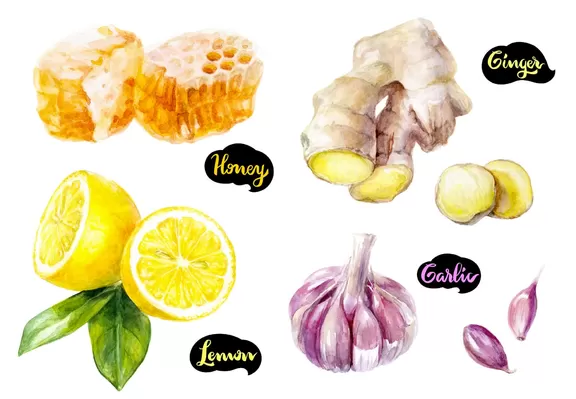
Ginger (Zingiber officinale) appears to have broad-spectrum antibiotic ability; i.e., it inhibits the growth of a wide variety of disease causing bacteria. As research indicates, ginger can inhibit and kill bacteria. Because ginger is literally a food you can eat, this makes it one of the best natural antibiotics.
The reason why ginger is so aggressive against bacteria may be due to the chemical compounds in this root: gingerols and shogaols. So if you plan on using a ginger supplement of some kind, you might want to take note if these compounds are present; as the bulk of the antibacterial ability may hinge on them.
From the research, here are some minimal inhibitory concentration (MIC; denotes the lowest concentration of a substance that can arrest the growth of a microorganism) and minimum bactericidal concentration (MBC; denotes the lowest concentration of a substance that can kill a bacteria) for ginger against some very common bacterial pathogens (also remember the abbreviations MIC and MBC; as we will be using them frequently in this article!).
Ginger’s Effect on Common Bacterial Pathogens
Please note that µg is the abbreviation for micrograms. And, 1 milligram = 1000 micrograms. Also note that 1 mg/mL (one milligram per milliliter) is about equal to 0.1%.
- Campylobacter: MIC of 0.3125%. MBC of 2.5%.
- Clostridium perfringens: MIC between 0.0625% and 1%.
- Escherichia coli: MIC of 2.5 mg/mL (0.25%).
- Listeria monocytogenes: MIC of 52 µg/mL. MBC of 104 µg/mL.
- Salmonella: MIC of 16 mg/mL. MBC of 80 mg/mL
- Staphylococcus aureus: MIC of 0.6 µg / mL. MBC of 1.73 µg / mL
- Streptococcus pneumoniae: MIC of 0.7 µg / mL. MBC of 2.04 µg / mL
- Streptococcus pyogenes: MIC of 0.44 µg / mL. MBC of 1.11 µg / mL.
- Haemophilus influenzae: MIC of 0.316 µg / mL. MBC of 1.42 µg / mL.
Dr. John Herzog (MD)
Dr. John Herzog, a "survival surgeon" from Maine explains what home remedies work best in a crisis situation.
This may be important in the event you require first-aid or are in an emergency situation without easy access to a hospital. Dr. John Herzog has assembled a large collection of home remedies for such scenarios.

Why Ginger Kills Bacteria
Ginger is active against several pathogenic microorganisms in its natural state; which proves it can be used as a capable medicine. Ginger has phytochemicals (chemicals naturally occurring in plants) gingerols and shogaols; which are capable antimicrobials. The antimicrobial activity of ginger may be due to these phenolic compounds.(source 1)(source 3)
Several phytochemicals are present in ginger, including: 4-, 6-, 8-, 10-, and 12-gingerols and 6-, 8-, and 10-shogaols, flavonoids, and phenolics.(source 2)
Research has indicated that shogaols are produced from gingerols when ginger is dehydrated. Generally shogaols have more biological effects than gingerols. Gingerols are the primary constituents of fresh ginger roots. Shogaols are found in low amounts in dried and thermally treated roots.(source 2)
Claire Goodall’s Amazing Guide
Clair Goodall is a bee-obsessed, natural medicine convert from Minnesota (USA). And, she does keep bees!
Clair has created 350+ page book documenting how to replace the toxic products and medications in your home with healthier, all-natural alternatives.

Ginger VS Bacteria that Infects the Respiratory Tract

A study discussing the effects of ginger on respiratory infection bacteria was published in the East African Medical Journal [79.11 (2002): 588-592].(source 4) The study states that respiratory tract infections are a major cause of illness and death worldwide. These types of infections tend to occur in cold months and are important to treat in children, the elderly, and people with reduced immune defenses.
Respiratory tract infections such as sinusitis, meningitis, pneumonia, and chronic bronchitis have been associated with the following bacteria:
- Staphylococcus aureus
- Streptococcus pneumoniae
- Streptococcus pyogenes
- Haemophilus influenzae
This study investigated how ginger would affect the aforementioned bacteria associated with the stated respiratory infections.

Comprehensive Herbalist School
Dr. Patrick Jones, founder of the HomeGrown Herbalist School of Botanical Medicine has been a practicing veterinarian for over 25 years. He is also a clinical herbalist and traditional naturopath.
Kevin Harrington, Original Shark from ABC’s Shark Tank, stands behind Dr. Patrick Jones and HomeGrown Herbalist.
Learn More
Comprehensive Herbalist School
Dr. Patrick Jones, founder of the HomeGrown Herbalist School of Botanical Medicine has been a practicing veterinarian for over 25 years. He is also a clinical herbalist and traditional naturopath.
Kevin Harrington, Original Shark from ABC’s Shark Tank, stands behind Dr. Patrick Jones and HomeGrown Herbalist.Learn More
The study found the MIC and MBC for ginger against these pathogens. And, the results of the test showed that a very small amount of ginger could inhibit and kill all of these bacteria. The MIC and MBC results from the study are as follows (results are in µg / mL; which is micrograms per milliliter):
For S. aureus:
- MICs ranged from 0.0003 µg / mL to 0.6 µg / mL
- MBCs ranged from 0.15 µg / mL to 1.73 µg / mL
For S. pneumoniae:
- MICs ranged from 0.001 µg / mL to 0.7 µg / mL
- MBCs ranged from 0.15 µg / mL to 2.04 µg / mL
For S. pyogenes:
- MICs ranged from 0.0005 µg / mL to 0.44 µg / mL
- MBCs ranged from 0.9 µg / mL to 1.11 µg / mL
For H. influenzae:
- MICs ranged from 0.001 µg / mL to 0.316 µg / mL
- MBCs ranged from 1 µg / mL to 1.42 µg / mL
The study concluded by stating:
In conclusion, the results of this study indicate that ginger and bitter kola extracts could be better options to some of the antibiotics commonly used for respiratory tract infections in the environment of Buea, Cameroon. These findings, therefore, are of great significance and could be clinically exploited.
East African Medical Journal [79.11 (2002): 588-592]
The Most Prevalent Bacterial Pathogens

According to the U.S. government’s FoodSafety.gov website,(source 5) the most common bacterial pathogens responsible for the most illnesses, hospitalizations, or deaths in the United States are:
- Campylobacter
- Clostridium perfringens
- Escherichia coli, also known as E. coli
- Listeria
- Salmonella
Ginger’s Effect on Campylobacter
A study published in the Journal of Agricultural Science and Technology [A 1 (2011): 1235-1240](source 6) found how ginger would effect Campylobacter. 25 Campylobacter isolates were used in the tests; and, the tests found the MIC and MBC for ginger.
Also, two other herbs were tested in the same fashion: galangal and hoan ngoc ( Pseuderanthemum palatiferum). These herb combinations were also tested against Campylobacter.

HomeGrown Herbalist Herb Shoppe
Owner of HomeGrown Herbalist Dr. Patrick Jones is a practicing veterinarian, Clinical Herbalist, and traditional naturopath. He owns and operates Fairview Animal Hospital in Buhl, ID.
Their herb shoppe provides herbs, essential oils, and tools. If you have some time, check it out!
Learn More
HomeGrown Herbalist Herb Shoppe
Owner of HomeGrown Herbalist Dr. Patrick Jones is a practicing veterinarian, Clinical Herbalist, and traditional naturopath. He owns and operates Fairview Animal Hospital in Buhl, ID.
Their herb shoppe provides herbs, essential oils, and tools. If you have some time, check it out!Learn More
The study found that 11 Campylobacter isolates had an MIC of 0.3125% ginger extract. At the same concentration, the Ginger / hoan ngoc combination inhibited 15 isolates. All of the Campylobacter isolates were inhibited at a 5% ginger concentration. And, all of the isolates were inhibited at the 0.3125% concentration by the Ginger / hoan ngoc combination.
Concerning the ability to kill, the MBC for ginger was found to be 2.5% for 14 isolates. The ginger / hoan ngoc combination killed 23 isolates by the 1.25% concentration.
Ginger’s Effect on Clostridium perfringens
Research on ginger extract (not essential oil) against this bacteria appears somewhat limited. Yet, there was one study that determined the MIC of ginger against Clostridium perfringens. The study was published in the Journal of Food Protection [2021].(source 7)
The study found that the MIC for ginger against Clostridium perfringens was between 0.625 and 10 g/kg; i.e., between 0.0625% and 1%. Thus this research verifies that ginger is active against this bacteria.
Ginger’s Effect on E. coli
A study published in Journal of Advances in Biology & Biotechnology [(2018): 1-8](source 8) found the MIC for ginger extract and ginger oil on E. coli and Staphylococcus aureus (S. aureus). Both E.coli and S. aureus had an MIC of 2.5 mg/mL (0.25%). The oil extract of ginger did not show inhibitory effect at concentrations of 10 mg/mL.
Thus we can see that very small concentrations of ginger will arrest the growth of E. coli.
It is important to note that some experiments create extracts with different solvents. The type of solvent used can often influence the activity of the extract against a tested organism. This study used water to create its extract from ground ginger. So, it is more relevant than a study that uses an exotic solvent.
Ginger’s Effect on Listeria
A study published in Der Pharmacia Lettre [8.1 (2016): 181-187](source 9) determined the MIC and MBC for ginger against Listeria monocytogenes (L. monocytogenes). The study used crushed ginger and made an extract from 350mL of 70% ethanol and 150mL of distilled water.
The study found the MIC for the ginger extract against L. monocytogenes was 52 µg/mL (micrograms / milliliter). The MBC of the ginger extract against this bacteria was 104 µg/mL.

Comprehensive Herbalist School
Dr. Patrick Jones, founder of the HomeGrown Herbalist School of Botanical Medicine has been a practicing veterinarian for over 25 years. He is also a clinical herbalist and traditional naturopath.
Kevin Harrington, Original Shark from ABC’s Shark Tank, stands behind Dr. Patrick Jones and HomeGrown Herbalist.
Learn More
Comprehensive Herbalist School
Dr. Patrick Jones, founder of the HomeGrown Herbalist School of Botanical Medicine has been a practicing veterinarian for over 25 years. He is also a clinical herbalist and traditional naturopath.
Kevin Harrington, Original Shark from ABC’s Shark Tank, stands behind Dr. Patrick Jones and HomeGrown Herbalist.Learn More
It is interesting to note that a study published in the Journal of Food Protection [68.10 (2005): 2054-2058](source 10) did not find any activity for ginger at a 10% concentration against L. monocytogenes. Yet, if you examine how this study’s extract was created, it appears they used a much more strenuous process. So it appears, if you process ginger enough, this may cause it to lose antimicrobial ability.
Ginger’s Effect on Salmonella
A study by the Hue University Journal of Science [128.3B (2019): 105-111](source 11) examined how ginger would affect Salmonella and E. coli. The study used ethanol (which is ethyl alcohol, which is the alcohol in beer / wine / liquor) to create the ginger extract. It should be noted that the process to create the extract seemed somewhat intense.
The study found the MIC for their ginger extract against Salmonella was 2 mg/mL and the MBC for the extract was 4 mg/mL. Against E. coli the MIC was 16 mg/mL and the MBC was 80 mg/mL.
The study stated that the ginger extract was more effective than the antibiotic drugs gentamicin and amoxicillin. The study’s conclusion makes the following remarks:
Both ginger and chive bulbs have antibacterial activity against E. coli and Salmonella spp. However, [solidified chive extract] is more effective against Salmonella spp. than against E. coli. The antibacterial activity of [solidified ginger extract] and [solidified chive extract] against E. coli is higher than that of amoxicillin and tetracycline. The antibacterial activity of [solidified ginger extract] and [solidified chive extract] against Salmonella spp. is more effective than that of gentamicin and amoxicillin.
Hue University Journal of Science [128.3B (2019): 105-111]
Ginger’s Side Effects
Ginger is a very safe herb, and generally will not cause any problems for most people. Yet, possibly the most common side effect is upset stomach or heartburn—espcially if a lot is taken on an empty stomach.
Although ginger has the US FDA’s “generally regarded as safe” (GRAS) certification, there are still some side effects and warnings to be aware of. Possibly the two most important are that this herb should not be taken with blood thinners. And, if you have a history of gallstones, you should avoid this herb.
There are more side effects, drug interactions, and contraindications for ginger; but, are beyond the scope of this article. Herbsey has a full article dedicated to this topic. If you have some time, it is a thorough overview of the side effects of ginger. You can find it here: Ginger’s Side Effects.
About the Author
Nick Gross is a natural medicine enthusiast who has been researching and writing about natural medicine since 2008. Nick is primarily a web developer, but also researches and authors written and video content about natural health. Nick has a bachelor’s degree in Management Information Systems from the University of Northern Iowa.
More on Nick GrossImportant Disclosures & Disclaimers
It is important to use the information you find on Herbsey.com in the right way. Also for legal reasons, these disclaimers and disclosures are necessary. For further information about each, feel free to click the link provided to the page on this website that provides more information.
Medical Disclaimer
The information on this website is not a prescription for anyone. This information is for informational or educational purposes only, and is not a substitute for professional medical advice or consultations with healthcare professionals.
Advertisement Disclosure
Some of the links provided on this article and website are affiliate links. If you purchase a product after clicking on these links, Herbsey.com will earn a commission. Herbsey.com promotes various products through advertisement and text links. For more information: Our Advertisements.







